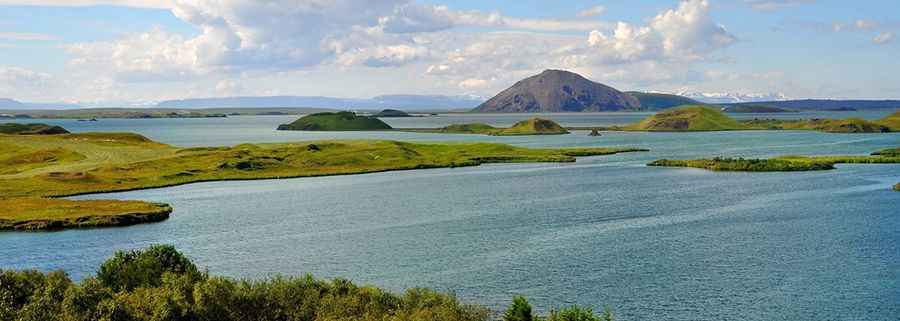Secrets Of The Ring Road: Iceland’s Epic Road Trip
Ring Road, also known as Route 1, is a national road that runs around Iceland. It is 1,332 Kilometres in length, and connects most of the towns and landmarks together in Iceland. From Reykjavik it goes north to Blönduós and Akureyri, to the eastern city of Egilsstaðir, down to Höfn, and finally follows the south coast back to Selfoss.

It is certainly possible to travel the whole of Ring Road - and essentially do a lap of Iceland, all within a 1 week holiday, although it may be more enjoyable if you have a few extra days to take it slow and really soak in the culture and sites.
Getting Around
When travelling around Iceland’s ring road, you’re best to take it at your own pace. There is so much to see throughout, and it is so accessible and easy to navigate, which is why driving the ring road is a much better option than public transport.
West Iceland
West Iceland is where you start off the journey of ring road, assuming you have arrived in Keflavík International Airport for the vacation (near Reykjavik). Before setting off on the journey, it may be worth checking out the town. There are various museums with great reviews, as well as lots of walking tours which is a chance to have an expert narrate and guide you around. This is a chance to really learn about the culture before you set off on your ring road journey.
Upon departing, the Blue Lagoon is the first absolute-must stop. This is essentially an outdoor bathing area; a geothermal Lagoon that is known worldwide. Even in the winter, this Lagoon is a luxury experience. There are bars you can swim to, a spa and a lovely restaurant. It is worth noting that booking in advance is necessary - as mentioned, this has worldwide popularity.
North Iceland
When reaching the north of Iceland, diamond circle is a great choice as it has many natural wonders in close proximity. Goðafoss waterfall is one of those - a stunning 30 meter wide and 12 meter drop waterfall that has a deep history in Christianity. Its name, the waterfall of the gods, references the conversion to christianity of over 1000 years ago.
The stunning Lake Mývatn is also nearby. It was created how most things in Iceland are created - by a colossal natural event. Around 2300 years ago there was a basaltic lava eruption, and the lake is the result. This is one of the largest lakes in Iceland and is certainly worth stopping by, particularly for bird watchers and landscape photographers.
East Iceland
As you reach the east of Iceland, Jökulsárlón ice cave is certainly worth checking out. The ice cave. You can get a tour that takes you through the ice cave, and departs from the glacier lagoon in Jökulsárlón. This tends to be something only accessible in winter, when the temperature is below zero.
When in Jökulsárlón, seeing the glacier lagoon is a must. Pact full of icebergs, the lagoon is an extraordinary site. It is the most popular filming location in Iceland for a reason - unique and breathtaking ice chunks resembling diamonds in the water.
South Iceland
As you travel south towards the end of your ring road journey, the sights of Iceland do not get any worse. In fact, the south side of Iceland has some magnificent landscapes to offer of its own. One of the most impressive attractions in the south of the country is no doubt Reynisfjara, also known as the black sand beach. Reynisfjara is included in the top 10 most recommended to visit by National Geographic for a reason. The astonishing landscape, the powerful roar of Atlantic waves and the huge basalt stack makes for an incredible experience. Not to mention the unusual beautiful black sand that the whole of Reynisfjara is set in.
Another natural wonder of the ring road to see in the South coast of Iceland is Fjaðrárgljúfur. This is a river canyon that dates 2 million years back and has breathtaking views. This canyon has been naturally formed into a magnificent landscape with an abundance of hiking opportunities and photography potential.
Car rental in Iceland make the Icelandic road trips dream a reality. It is worth bearing in mind that during the winter, the roads will be more icey and have worse visibility. This is still okay to drive on if you’re careful, but it may take longer than expected to navigate compared to the rest of the year.